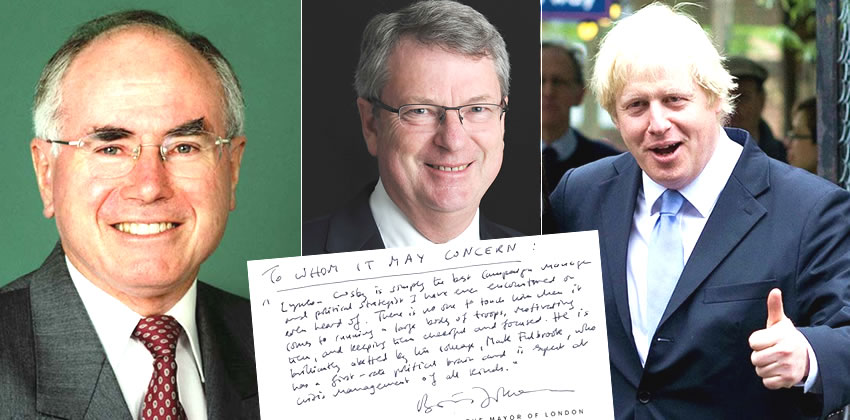Opinion: How Canada found an antidote to Lynton Crosby’s venom

By Lisa Chang
Lynton Crosby’s wedge strategies and dog whistle politics helped unpopular conservative prime ministers in Australia, New Zealand and the United Kingdom to retain power. But the ‘Lizard of Oz’ failed so miserably in Canada, that his partner Mark Textor had to launch a social media offensive to revise history and create a narrative where their firm Crosby|Textor never played a part in Stephen Harper’s campaign. Why were Canadian voters able to break this legendary spin wizard’s dark spells when their commonwealth cousins couldn’t?
Before Crosby came into the picture, the Tory message was simple: “Things aren’t perfect, but they could be much worse under an untried and untested leader. ISIS is taking over the world, but we can protect you from Jihadist terrorism. The global economy is crumbling, but the Canadian economy is doing well except for a ‘discrete sectoral downturn’.”
Harper’s team soon realized that this message was as ineffective as the attack ads reminding us of Justin Trudeau’s nice hair played ad nauseam on TV.
Canadians voters were desiring change, and they were looking for a leader who could usher in that change. They were not looking for someone to “stay the course.”
Then there was the small matter of the Duffy trial, where the dirty laundry of the Prime Minister’s Office was being aired for the Canadian electorate to see.
Just what do you do when your campaign is at best uninspiring and at worst being undone by $90,000 cheque?
Orchestrated by the master of dark arts, Harper and his henchmen began ratcheting up the race rhetoric and hate hysteria. The new message coming out of the blue camp was not subtle: “We are the old stock Canadians who speak perfect unaccented English. They’re niqab-clad Muslim #peoplelikenenshi who engage in barbaric cultural practices. We’re already under siege and Liberals and NDP will let 125 million more of them into Canada and establish Sharia courts in Saskatchewan. But we’ll set up a snitchline for you to report your hummus eating neighbours.”
The dirty tricks seemed to be working. Conservatives, who were languishing in third place, suddenly surged to take the lead. Then, all of a sudden, Lynton Crosby mysteriously aborted the mission and abandoned the Conservatives just days before the election.
Why did Crosby decide to cut the losses and retreat to try and protect his brand?
The language of fear and hate resonated with Harper’s base. But it also scared the living daylights of everyone else. Historians started seeing parallels between Tories’ Barbaric Practices Act and the Nazi’s Malicious Practices Act in terms of the culture of denunciation the acts were intended to create. Twitter exploded with messages of support for #peoplelikenenshi. A growing chorus of intellectual voices warned of the dangers of the Conservatives’ race baiting.�
Advanced polling days rolled by, and a record number of voters flocked to the polling booths overwhelming Elections Canada staff in many parts of other country.
Election night handed the Liberals a stunning victory, and the Conservatives a stinging defeat. But the number popular votes received by Conservatives only fell fractionally from 5.8 million in 2011 to 5.6 million in 2015. But the anti-Harper vote increased dramatically, from 8.9 million in 2011 to 11.9 million in 2015.
The antidote to Lynton Crosby brand venom that Harper’s Tories were banking on to poison the political climate and win the election turned out to be the higher voter turnout. The long lines at polling places laid waste to the best laid plans of Crosby and the Tories.
“The only thing necessary for the triumph of evil is for good men to do nothing,” Edmund Burke famously said.
On October 19, the good people of Canada did something to prevent evil from triumphing. They voted.�



